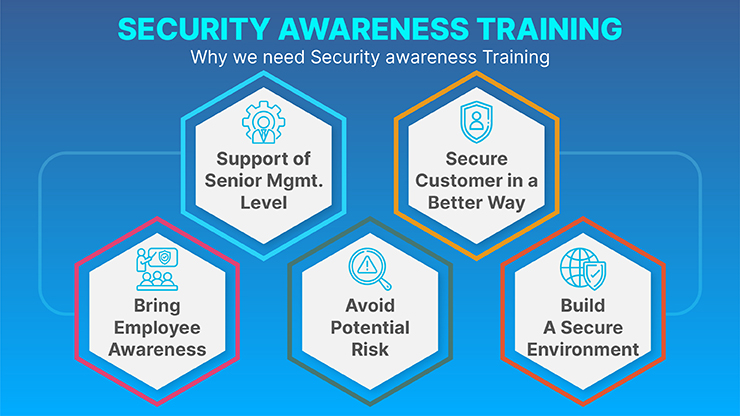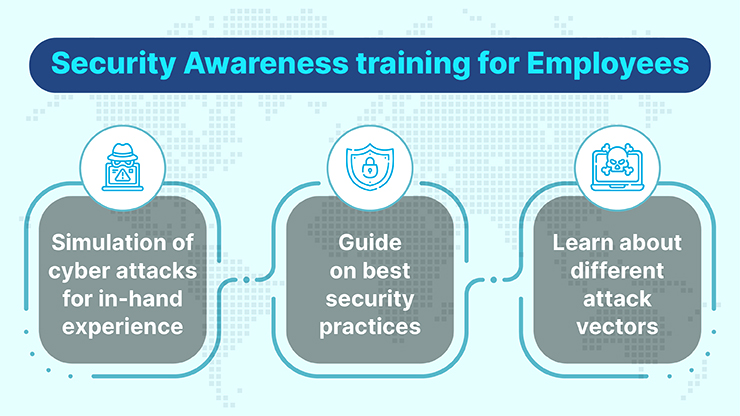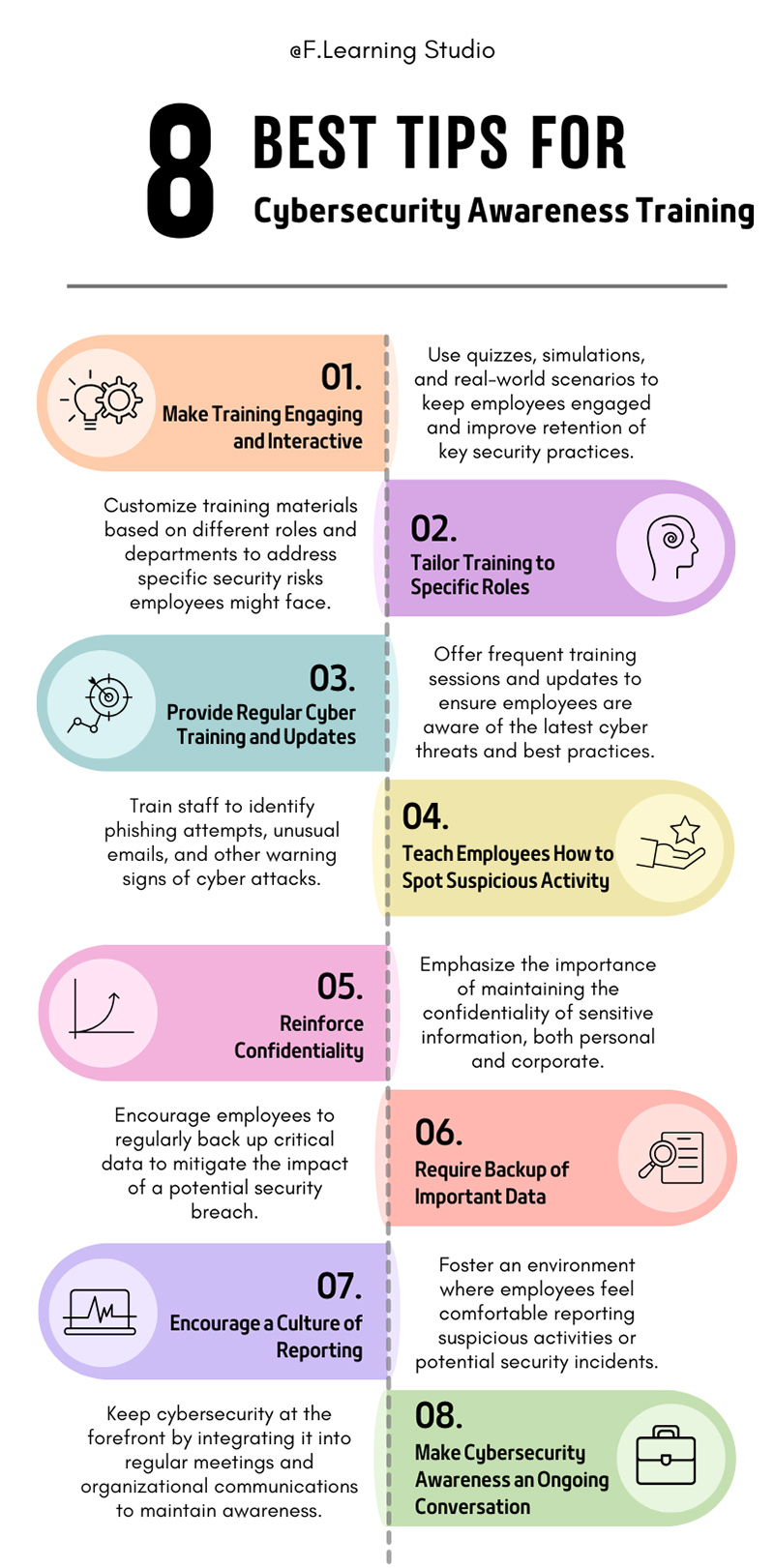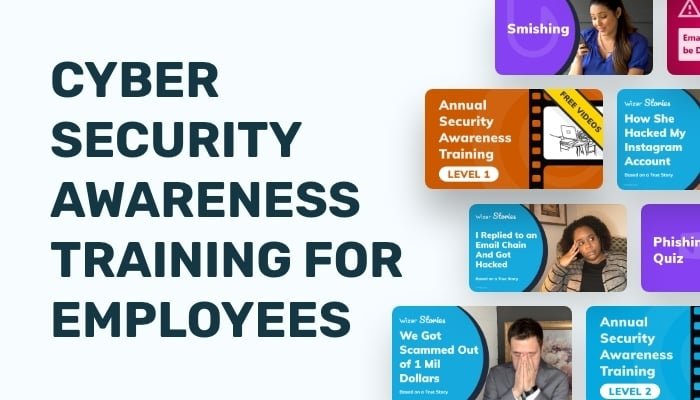
Introduction
Overview of Cybersecurity Awareness Training
In today’s digital landscape, the importance of Cybersecurity Awareness Training cannot be overstated. This training equips employees with the knowledge and skills necessary to recognize potential threats, such as phishing schemes and malware attacks. It fosters a culture of vigilance that can significantly minimize the risk of a cyber incident. For instance, a company might share a real-world example of how an employee’s quick thinking prevented a costly data breach, highlighting the tangible benefits of such training.
Importance of Employee Training in Cybersecurity
The human element is often the weakest link in the cybersecurity chain. Therefore, emphasizing employee training in cybersecurity is crucial. When employees understand:
- The types of cyber threats they might face
- Best practices for data protection
- The protocols for reporting suspicious activities
This knowledge empowers them to act responsibly online and safeguard sensitive information. With effective training, companies can not only protect their assets but also cultivate a proactive workforce ready to face the ever-evolving threats in the cyber realm. Such vigilance is vital for sustaining operational integrity and trust.

Understanding Cybersecurity Risks
Common Cyber Threats in the Workplace
As organizations navigate the complexities of the digital world, they face a myriad of cybersecurity risks. Understanding these threats is the first step toward fortifying defenses. Common cyber threats in the workplace include:
- Phishing: Deceptive emails that entice employees into divulging sensitive information.
- Malware: Malicious software that can disrupt operations or steal data.
- Ransomware: A type of malware that holds data hostage until a ransom is paid.
- Insider Threats: Employees intentionally or accidentally compromising security.
For example, a simple mistake such as clicking a harmful link can lead to widespread repercussions for the organization.
Impact of Cyber Attacks on Businesses
The impact of cyber attacks can be devastating, often resulting in:
- Financial Loss: Costs associated with recovery and remediation can be astronomical.
- Reputational Damage: A breach can erode customer trust and brand integrity.
- Operational Downtime: Businesses may face interruptions that disrupt their services.
Consider the case of a major corporation that experienced a ransomware attack, leading to operational paralysis for days. Such incidents underscore the urgency of understanding cybersecurity risks and implementing robust defenses.

Designing an Effective Training Program
Assessing Employees’ Current Knowledge
To create a robust cybersecurity training program, it is essential to start by assessing employees’ current knowledge. This evaluation can be done through:
- Surveys: Quick questionnaires can help gauge awareness levels regarding potential cyber threats.
- Quizzes: Short assessments provide insight into employees’ understanding of key concepts.
- Interviews: One-on-one discussions can reveal knowledge gaps and areas needing emphasis.
For example, a company might discover that a significant percentage of employees are unaware of common phishing tactics. This insight will shape the training content effectively.
Setting Clear Objectives for Training
Once the assessment is complete, establishing clear objectives for the training program becomes vital. Defining what the company aims to achieve ensures that the training is focused and effective. Possible objectives could include:
- Improving security awareness by 80% among employees within six months.
- Reducing phishing click rates to below a specific threshold after training.
- Encouraging proactive reporting of suspicious activities.
Setting these goals provides a roadmap for both trainers and participants, setting the stage for a successful cybersecurity training initiative.

Implementing Training Methods
Interactive Workshops and Simulations
Building on the objectives laid out earlier, an effective way to engage employees is through interactive workshops and simulations. These hands-on experiences allow participants to dive deeper into cybersecurity concepts. For instance, workshops could cover topics like:
- Identifying phishing emails through real-time examples.
- Data protection practices that simulate daily tasks.
Similarly, simulations can create scenarios where employees must respond to a simulated cyber incident, allowing them to practice response strategies in a controlled environment. This method not only enhances learning but also fosters teamwork and communication.
Role-playing Exercises and Scenarios
Another dynamic approach is utilizing role-playing exercises and scenarios. This technique encourages employees to step into different roles, such as IT personnel or the “attacker,” to better understand various perspectives in a cybersecurity context.
- Example Scenario: An employee could role-play as a security officer responding to a data breach, while peers simulate the stress and challenges encountered during such an event.
These exercises build empathy and awareness, emphasizing the importance of cybersecurity across all functions within the organization. Such immersive training methods create a memorable learning experience that resonates with employees.

Educating Employees on Safe Practices
Password Management and Data Security
To further bolster cybersecurity defenses, educating employees on safe practices is paramount. A key aspect of this is effective password management. Employees should be trained on:
- Creating Strong Passwords: Use a mix of letters, numbers, and symbols. For instance, rather than “password123,” a stronger option would be “G@yT!sM3%@2023.”
- Using Password Managers: Encourage the use of password management tools to store and generate unique passwords securely.
- Regularly Updating Passwords: Employees should change their passwords every few months to stay ahead of potential breaches.
By adopting these practices, employees significantly lower the risk of unauthorized access to sensitive information.
Recognizing Phishing Attempts and Social Engineering
In addition to password security, training employees to recognize phishing attempts and social engineering tactics is crucial. Employees should learn to look out for:
- Suspicious Emails: Unexpected requests for sensitive information or urgent actions can signal a phishing attempt.
- Unfamiliar Links or Attachments: Caution should be exercised when clicking on links or downloading files from unknown sources.
Sharing real-life examples of phishing attempts can make this training more relatable, transforming theory into practical, everyday knowledge that empowers employees to act confidently against cyber threats.

Monitoring Progress and Evaluating Training Effectiveness
Tracking Employee Participation and Compliance
After implementing cybersecurity training, it’s essential to monitor progress and evaluate its effectiveness. One of the first steps is to track employee participation and compliance. This can include:
- Attendance Records: Keep tabs on who attended training sessions to ensure full engagement.
- Completion Rates: Monitor the percentage of employees who complete online modules or assessments.
- Feedback Surveys: Use quick surveys post-training to gather insights on employee satisfaction and perceived value.
For example, a company could discover that only 60% of employees completed the training, leading to targeted follow-ups to boost compliance.
Conducting Phishing Simulations and Assessments
Another effective method to evaluate training efficacy is by conducting phishing simulations and assessments. These exercises can help identify how well employees have absorbed training, showcasing their ability to spot threat indicators in real time.
- Simulated Phishing Emails: Regularly send out fake phishing emails to gauge employee responses.
- Assessment Tests: Implement quizzes to reinforce learning and measure retention.
These simulations not only test knowledge but also reinforce the importance of cybersecurity vigilance, turning knowledge into actionable behavior and creating a more secure work environment overall.

Creating a Culture of Cybersecurity Awareness
Encouraging Reporting of Security Incidents
To foster a strong cybersecurity environment, it’s crucial to create a culture that encourages reporting of security incidents without fear of repercussions. Employees should feel empowered to report suspicious activities, knowing that their vigilance contributes to the organization’s safety. Effective strategies include:
- Establishing Clear Reporting Channels: Provide multiple avenues for reporting, such as a dedicated email or an anonymous hotline.
- Regularly Communicating the Importance of Reporting: Remind employees through newsletters or meetings that every observation counts, no matter how small.
For example, one organization experienced a minor security breach that could have escalated into a major problem. Thanks to an employee’s quick report, the issue was contained, showcasing the importance of an approachable reporting culture.
Rewarding and Recognizing Good Security Practices
In addition to encouraging reporting, recognizing and rewarding good security practices can significantly enhance employee engagement. Implementing a recognition program can motivate staff to prioritize cybersecurity, including:
- Monthly Security Champions: Acknowledge employees who demonstrate exceptional vigilance.
- Incentives for Participation: Offer small rewards for employees who successfully identify phishing simulations or complete additional training.
Creating an environment that celebrates security-conscious behavior not only enhances awareness but also helps build a resilient organization against cyber threats.

Continuous Improvement and Updates
Regularly Updating Training Materials
To maintain an effective cybersecurity training program, continuous improvement is essential. This involves regularly updating training materials to reflect the latest threats and best practices. Consider:
- Reviewing Content Annually: Set a schedule to evaluate and refresh training materials, ensuring they align with current cyber threats.
- Incorporating New Technologies and Techniques: As new tools and methodologies arise, training should evolve to include these advancements.
For instance, if a new kind of malware emerges, it’s crucial to update the training to educate employees about its characteristics and how to avoid it.
Staying Informed About Evolving Threats
Additionally, staying informed about evolving threats is critical in the realm of cybersecurity. Encourage teams to:
- Engage with Cybersecurity Blogs and Forums: Utilize resources like industry publications and websites to stay current on trends.
- Attend Workshops and Conferences: Encourage participation to gain insights from experts and network with peers.
By fostering a culture of continuous learning and improvement, organizations can ensure their employees remain well-prepared to tackle the ever-changing landscape of cybersecurity threats. This proactive approach not only enhances security posture but also boosts employee confidence in handling potential incidents.

Conclusion
Recap of Key Strategies for Cybersecurity Training
As we conclude this exploration into effective cybersecurity training, it’s vital to recap the key strategies that can enhance organizational preparedness. From assessing employees’ current knowledge and setting clear training objectives to implementing engaging methods like interactive workshops and simulations, each component plays a crucial role in building a robust cybersecurity culture.
Moreover, continuous evaluation through monitoring progress and updating training materials ensures that your program remains relevant and effective.
- Encourage Reporting: Foster a culture that values incident reporting.
- Recognize Good Practices: Reward employees for their vigilance.
Encouraging Ongoing Vigilance in Cybersecurity Practice
To truly cultivate a cyber-aware workforce, ongoing vigilance is essential. Continuous learning and active employee participation in cybersecurity practices will serve as ongoing defenses against evolving threats.
Remember, cybersecurity is a shared responsibility; every employee has a role to play in keeping the organization secure.
In closing, explore the wealth of resources our blog, TECHFACK, offers, providing insights and best practices that can further your understanding and implementation of effective cybersecurity training. Together, we can build a safer digital environment, one employee at a time.

